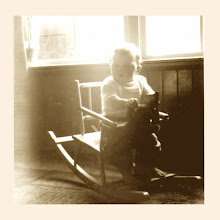 religion that has led to a profound mistrust of firm believers. I would even go as far as to state that I am convinced there should always be room for doubt.
religion that has led to a profound mistrust of firm believers. I would even go as far as to state that I am convinced there should always be room for doubt.I won't come as a surprise that my attitude towards religion is somewhere between serious suspicion and extreme wariness. And certainly I draw the line at religious groups claiming to be superior or better than others, and firmly oppose any sects, extremists or religious nuts claiming to belong to the "only acceptable religion". I mean, if you are going to be religiously inclined that's fine, but don't bully others into involuntary partaking in your convictions.
In my opinion too much is made of the differences between religions. The fundamental difference between christianity and islam, of example, may be the belief in the human god, but apart from this the similarities far outweigh the differences. The emphasis on differences usually has its roots in culture and politics, or in the interpretation of the principles of the specific belief. The scope of interpretation within one religion is usually greater than the root difference between 'rivalling' religions. Strict interpretations and a strict imposing of one interpretation have over the centuries only resulted in greater variety. New varieties have had to accentuate their differences in order to survive, thus creating rivalry, hardline interpretation, oppression and finally new religions...
And I don't mean I am immune to the reasons that lay at the basis for belief and religion: fear of the unknown, lack of control of one's destiny and fate, uncertainty, insecurity and the sense of insignificance within the enormity of all.
A country that has been at the forefront of the rivalry between religions for quite a while now is Nigeria. As far as I know (and I realise I am very much limited by the minimal coverage of Nigerian affairs in western media!) this has only led to a violent struggle in the last few years. In music we have come to know both strong believers of the Christian faith, like juju-stars King Sunny Ade and (the reformed) Chief Ebenezer Obey, and devout Muslims, such as that hero of apala music Alhadji Haruna Ishola.
In this post I would like to share with you exponents of both Christianity and Islam. And in both cases with an explicit focus on their respective religion.
 Islam is represented by an album by the Muslim Carol Singers, led by brother Latifu Fagbayi Oloto. I bought this record in the mid-1980s at Stern's, and I gather they were glad to get rid of it, as there was an overcrowding of similar albums in their shelves. It has been an album that has raised eyebrows, evoked some curiosity, but one that has not been copied a lot.
Islam is represented by an album by the Muslim Carol Singers, led by brother Latifu Fagbayi Oloto. I bought this record in the mid-1980s at Stern's, and I gather they were glad to get rid of it, as there was an overcrowding of similar albums in their shelves. It has been an album that has raised eyebrows, evoked some curiosity, but one that has not been copied a lot.The music is in a style that at times borrows from fuji and at times from apala. While I like the choruses, I am not too impressed by brother Latifu's contribution. The best track, if you ask me, is the title track (B1). In apala style, but not in the same league as the great Alhadji Haruna Ishola. The music never gets off the ground, never really flows.
Leader LRCLS 52
 Representing Christian faith is a group with some mystery attached to it. The CD is credited to the Brotherhood Youth Fellowship Choir, but the publisher leaves some doubt if this is indeed the gospel choir which can be heard in these 21 songs. The songs are copied from cassettes bought in 2000, but probably recorded in the 1970s.
Representing Christian faith is a group with some mystery attached to it. The CD is credited to the Brotherhood Youth Fellowship Choir, but the publisher leaves some doubt if this is indeed the gospel choir which can be heard in these 21 songs. The songs are copied from cassettes bought in 2000, but probably recorded in the 1970s. This is a capella music in the strictest sense of the word, so no instruments and as in a church (i.e. "a capella"). The titles are largely unknown or have been added by the publisher.
I can only agree with the producers of this CD that this is music worth preserving. The chorusses are simply wonderful, if not heavenly. I just love the harmonies in these songs and the great variation in combining the very individual voices. There is a lot to be discovered, even after repeated listening. While the joy of these great singers oozes out of music, this is a compilation that rises above the religious content or the religiousness of its lyrics.
"Music from heaven"? If there is such a place I wouldn't mind hearing this music there!
Sound Museum SOMU 5
PS: I hope you have noticed there is an extra festive soundstream at the bottom of the blog page....
























